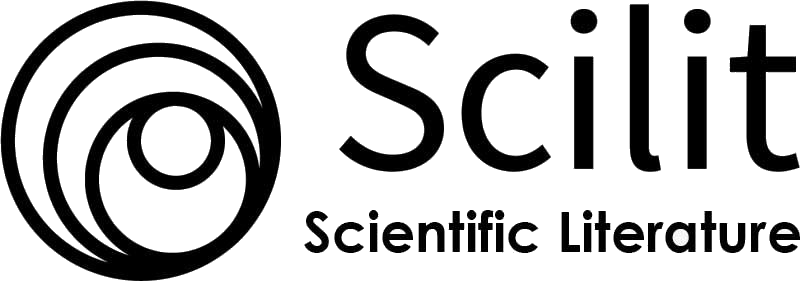Urban Drainage Systems and Implications on the Inhabitants and Physical Environment of Buea Urban Area, South West Region of Cameroon
DOI:
https://doi.org/10.58425/jegs.v4i1.340Keywords:
Urban drainage, environmental impact, public health, sustainable urban development, BueaAbstract
Aim: Rapid urban and unplanned development and increased construction have significantly altered the surface coverage of many developing cities triggering environmental hazards with severe human health and environmental consequences. This study examines the impact of unplanned urban drainage systems on the environment and public health in Buea, Cameroon, to identify key challenges and propose sustainable solutions.
Methods: A mixed-methods design was used. 300 semi-structured questionnaires were administered to a sample selected by simple random sample from a population of 40,073. Field observations of 30 drainage systems, measuring their depth and width to assess runoff evacuation effectiveness against international standards, were conducted using measuring tapes and GPS for spatial data collection. In addition to purposive face-to-face interviews held with 15 key officials from the departments of urban planning and housing, environmental engineering, urban development, water management, and environmental protection of government-related delegations of ministries, parastatals and the municipal council, secondary data were gathered from diverse sources including council reports, news outlets, and academic literature. Quantitative data were analyzed using descriptive and inferential statistics (percentages and frequencies and chi-square) via Microsoft Excel and SPSS (Version 23.0) while qualitative interview data underwent thematic content analysis. Results revealed that 85% of respondents expressed dissatisfaction with the urban drainage system, citing poor infrastructure, inadequate waste management, rapid population growth, and government inaction as key issues.
Results: Major environmental consequences identified include stream pollution, soil erosion, and ecosystem degradation, correlating with increased reports of waterborne diseases among the population. The correlation values on the relationship between poor drainage facilities and environmental challenges and health effects if the residents were very strong and positive as indicated by (P Value=0.911 and P Value 0.815) respectively. The measurements on drainage capacity indicated significant deviations from recommended standards, hindering effective runoff evacuation.
Conclusion: The findings emphasize a critical urban drainage crisis in Buea, demanding immediate and integrated action from stakeholders.
Recommendations: The study recommends increased investment in infrastructure and reconstruction, stringent monitoring of the environment. Rigorous enforcement of urban planning policies with heavy fines for defaulters should be adopted as an immediate priority and public awareness campaigns on environmental sustainability (most urgent). Additionally, establishing partnerships with local and international agencies can improve drainage management and environmental resilience. Other African cities should adopt options for sustainable urban development provided in this study.
References
Adeyinka, A. I., Ojo, J. S., & Otun, J. A. (2008). Impacts of Flooding in Some Selected Areas of Lagos Metropolis. Journal of Environmental Extension, 7, 74-81.
Ameen, R. F. M., & Mourshed, M. (2016). Environmental, social and economic challenges for urban development: Stakeholder’s perception in a developing economy. In Proceedings of the International Conference on Computing in Civil and Building Engineering, Osaka, Japan (pp. 6-8).
Anyinkeng, N., Neba, G. A., Mih, A. M., & Tening, A. S. (2020). Phytoremediation Potential of Some Macrophytes from a Car Wash Stream in Buea, South Western Cameroon. Journal of Environmental Protection, 1 11(12), 1052–1063.
Armitage, N. & A. Rooseboom (2000). The removal of urban litter from storm-water con- duits and streams: Paper 1 – The quantities involved and catchment litter management options’, Water SA Vol.26 No.2 Pp 15-19. Assessed June 2020.
Ashley, R., Blackwood, D., Butler, D., Jowitt, P., Davies, J., Smith, H.& Oltean-Dumbrava, C. (2008). Making asset investment decisions for wastewater systems that include sustainability. Journal of Environmental Engineering, 134(3), 200-209.
Cemiloglu, A, Chen, L.Z., Li, L. & Nanehkaran Y. A. (2023). Enhancing Urban Surface Runoff Conveying System Dimensions through Optimization Using the Non-Dominated Sorting Differential Evolution (NSDE) Metaheuristic Algorithm. Water 2023, 15(16), 2927; https://doi.org/10.3390/w15162927
Chiaga, N. F., Kimengsi, J. N., & Balgah, S. N. (2019). Catchment management and the sustainability of urban water supply. Evidence from Bamenda, Cameroon. Canadian Journal of Tropical Geography/Revue Canadienne de Géographie Tropicale, 6(2), 1-8.
Fletcher, T.D.; Shuster, W.; Hunt, W.F.; Ashley, R.; Butler, D.; Arthur, S.; Trowsdale, S.; Barraud, S.; Semadeni-Davies, A.; Bertrand-Krajewski, J.-L.; et al. (2015). SUDS, LID, BMPs, WSUD and more—The evolution and application of terminology surrounding urban drainage. Urban Water J. 2015, 12, 525–542.
Geldof, G. D. & Stahre, P. (2006). On the road to a new stormwater planning approach: from Model A to Model B (Water Practice and Technology Vol 1 No 1 © IWA Publishing Pp 78-82 Assessed November 2019.
Li, J., Zhou, W. and Tao, C. (2024). The Impact of Urbanization on Surface Runoff and Flood Prevention Strategies: A Case Study of a Traditional Village Land 2024, 13(9), 1528; https://doi.org/10.3390/land13091528.
MacDonald, P. (2017). Urban land and shelter for the poor. London, International Institute for Environment and Development, 1985 Pp 72-76 Assessed March 2007.
Manawi, S. M. A., Nasir, K. A. M., Shiru, M. S., Hotaki, S. F., & Sediqi, M. N. (2020). Urban flooding in the northern part of Kabul City: causes and mitigation. Earth Systems and Environment, 4, 599-610.
Mark, O., Apirumanekul, C., Kamal, M. M., & Praydal, G. (2001). Modelling of urban flooding in Dhaka City. In Urban drainage modeling (pp. 333-343).
Matos, J. S. (2003). Aspectos Históricos a Actuais da Evolução da Drenagem de Águas Residuais em Meio Urbano. Revista Engenharia Civil Lisboa, No. 16, P p. 13-23
Ministry of Environment, Protection of Nature and Sustainable Development. (2020). Environmental Report on Climate Change in Cameroon.
Monachese, A.P., Gómez-Villarino, M.T., López-Santiago, J., Sanz, E., Almeida-Ñauñay, A.F. and Zubelzu, S. (2024). Challenges and Innovations in Urban Drainage Systems: Sustainable Drainage Systems Focus Water 2025, 17(1), 76; https://doi.org/10.3390/w17010076
Mowla, Q. A., & Islam, M. S. (2013). Natural drainage system and water logging in Dhaka: measures to address the problems. Journal of Bangladesh Institute of Planners ISSN, 2075, 9363.
Nkemasong, N. A. (2014). Climate Variability and Implications on Hydrological Systems within the Southern Volcanic Province of Cameroon (Unpublished Ph.D. Thesis). Department of Geography, University of Buea, Cameroon.
Nkemasong, N.A., Yinkfu, R.N., Ngala, B.S., Enongene, F., Nkemndem, A., Kigha, P., Landoh, N., & Ayellni, L. (2022). Ascribing the capricious weather to the unprecedented July-September 2022 flood hazards in the Kumba and Mutengene-Likomba agglomerations of the southwest Cameroon coastal plain of Cameroon. International Journal of Development Research, 13(06), 63038-63050. https://doi.org/10.37118/ijdr.26875.06.2023.
Nsah, S. K. (2017). The Cameroon press photo archive (CPPA) Buea in Crisis 1955-2016. cognitive systems research, 3(1), 65-81.
Ojuku T, Ntemngweh P, Tendongfack. (2022). Understanding Urban Growth through Heat Islands Using Remotely Sensed Data: Yaoundé Case Study, Cameroon Current Urban Studies, Vol.10 No.2. https://www.scirp.org/reference/referencespapers?referenceid=3231006
Parkinson, J., & Tayler, K. (2003). Urban drainage in developing countries: Challenges and opportunities. Loughborough University.
Rio Declaration, (1992). Rio declaration on environment and development.
Sangaré, I. B., and Thibault, S., (1998), Autonomie durable ville/environnement : vers um nouveauprincipe d’évaluation et de conception de l’assainissement urbain ? 3ème Conférence Internationale,Les Nouvelles Technologies en Assainissement Pluvial, Lyon, France, v. 1, 191-198
(PDF) Problems of modern urban drainage in developing countries. Available from: https://www.researchgate.net/publication/11380199_Problems_of_modern_urban_drainage_in_developing_countries
Sarwar, M. G. M. (2005). Impacts of sea level rise on the coastal zone of Bangladesh. See http://static. weadapt. org/placemarks/files/225/golam_sarwar. pdf.
Senes, G.; Ferrario, P.S.; Cirone, G.; Fumagalli, N.; Frattini, P.; Sacchi, G.; Valè, G. (2021). Nature-based solutions for storm water management—Creation of a green infrastructure suitability map as a tool for land-use planning at the municipal level in the province of monza-brianza (Italy). Sustainability, 13, 6142.
Shelter Cluster. (2023). Buea floods mission report. https://sheltercluster.s3.eu-central-1.amazonaws.com/public/docs/Buea%20Floods%20Mission%20Report%20Shelter%20Cluster.pdf?VersionId=j1T8evTY2dNSm4X6cReshsiASLhy16WB
Silveira, A.L.L. (2002). Problems of modern urban drainage in developing countries. Water Science & Technology 45(7):31-40 DOI: 10.2166/wst.2002.0114
Silveira, A. L. L., Goldenfum, J. A. and Fendrich, R. (2001). Urban drainage control measures, in: Urban Drainage in Humid Tropics, C. E. M. Tucci (ed.) , Urban Drainage in Specific Climates, C.Maksimovic (ch. ed.), UNESCO Technical Documents in Hydrology, No. 40, Vol I, 125-154.
(PDF) Problems of modern urban drainage in developing countries. Available from: https://www.researchgate.net/publication/11380199_Problems_of_modern_urban_drainage_in_developing_countries
Sule, B. F. (2003). Water Security: Now and the Future. Being the 65th Inaugural Lecture delivered at the University of Ilorin, Ilorin, Nigeria.
Tchindjang, M. et al. (2020). Land Use and Land Cover Changes in the Centre Region of Cameroon (p. 34).
Trends, G. (2017). Challenges and opportunities in the implementation of the Sustainable Development Goals. United Nations Development Programme & United Nations Research Institute for Social Development.
UN. (2018). World Urbanization Prospects: The 2018 Revision.
United State Environmental Protection Agency (USEPA, 2034). Why You Should Consider Green Stormwater Infrastructure for Your Community. https://www.epa.gov/
Voskamp, I.M.; Van de Ven, F.H.M. ( 2015). Planning support system for climate adaptation: Composing effective sets of blue-green measures to reduce urban vulnerability to extreme weather events. Build. Environ. 2015, 83, 159–167.
World Bank. (2018). Information and communications for development 2018: Data-driven development.
World Bank. (2020). Cameroon: Urban Flooding and Economic Losses.
World Bank. (2023). Economic Impacts of Climate Change in the South West Region of Cameroon.
Yinkfu, R. N., Roland, N., Ngwani, A. & Funwi, G. N. (2023). Human adaptation measures to biophysical constraints on the Eastern slope Mount Cameroon. INISRT ISSN No:-2456-2165. Volume 8, Issue 11, November 2023.
Downloads
Published
How to Cite
Issue
Section
License
Copyright (c) 2025 Baba Adamu, Mohammadou Ousmanu Buba, Balgah Sounders Nguh, Mboza Jerry Clinton Yengeh, Amos Fang Zeh

This work is licensed under a Creative Commons Attribution 4.0 International License.
The authors retain the copyright and grant this journal right of first publication. This license allows other people to freely share and adapt the work but must give appropriate credit, provide a link to the license, and indicate if changes were made. They may do so in any reasonable manner, but not in any way that suggests the licensor endorses them or their use.










